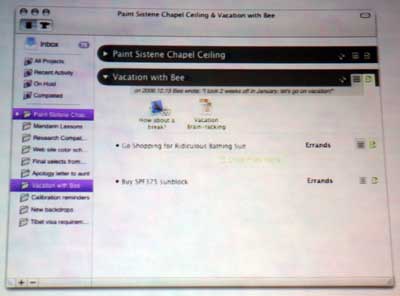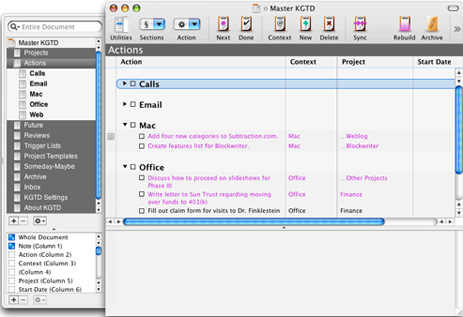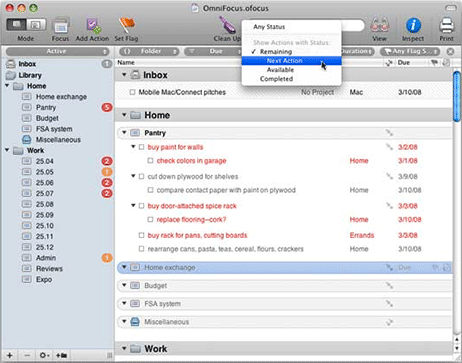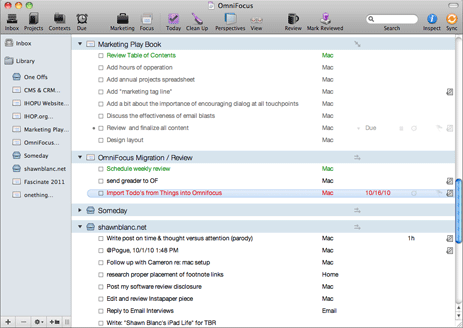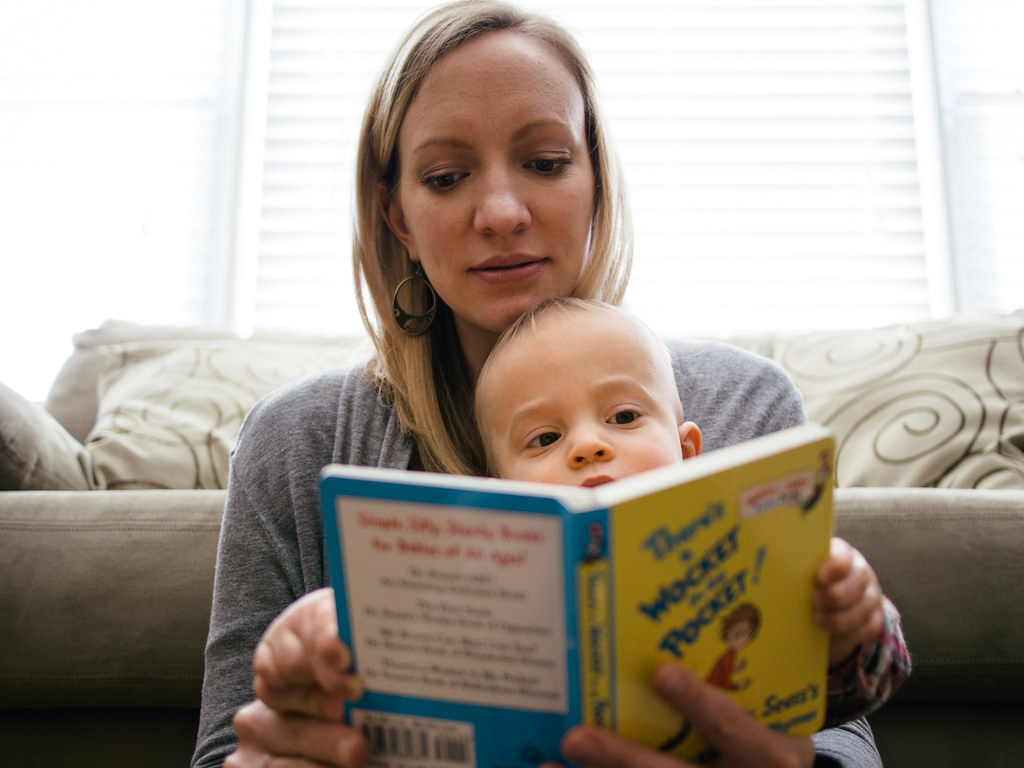There are some apps which, due to the nature of their usage and/or contents, seem to earn a more personal connection from the user than other apps. Twitter apps I think are like this because they’re filled with the life updates, corny jokes, and selfies of our friends and family. Writing apps also can garner a connection with their users because they serve as the tool where we express our thoughts and feelings.
And though one might expect an RSS app to be insipid, or, at best, utilitarian, I find them quite the opposite — because they’re filled with the recent articles, photographs, and stories of my hand-chosen, favorite writers, photographers, and news outlets.
An RSS reader is the window into your curated world.
* * *
Like so many other life-changing moments, my relationship with RSS readers began in a church pew.
It was a Sunday morning in early 2007, and our Church had Wi-Fi, and I was sitting in a back corner with a friend, and instead of using my PowerBook G4 to take notes I was surfing the web reading all my favorite blogs.
If you’ve read my review of NetNewsWire, you’re already familiar with the story: I used to keep all the blogs I enjoyed reading in a bookmark folder in Safari on my Mac. But that Sunday morning, sitting next to my friend, he introduced me to an RSS reader.
“You can follow all those sites in one spot, you know?”
I didn’t know.
He set me up with the RSS reader in Safari (which has long since been removed). But I soon moved on to Vienna, and then NetNewsWire 3.1 on the Mac (which, in my humble opinion, is one of the all-time best pieces of Mac software ever).
I’ve also used Google Reader, NewsGator Online, Reeder for Mac, iPad, and iPhone, ReadKit, NetNewsWire on my iPhone, Byline, Fever, and probably a few more.
And now, today, we have Unread. It’s a brand new RSS app for the iPhone, and it is fantastic.
Unread
I have been using Unread throughout its beta period for the past two months, and in that time it has quietly usurped the previous RSS reader on my home screen.
Unread works with Feed Wrangler, Feedbin, and Feedly. I’ve been using it with my Feed Wrangler account and it loads my unread items extremely quickly.
Unread is also very fun. It’s full of subtle animations and easy gestures. The app is understated, extremely readable, and welcoming.
It’s not that there’s anything in particular. There’s just a simple elegance to it. The app is well designed and nice to use.
It’s on launch sale for just $3 and I think it’s worth 10 times that. I paid $30 for NetNewsWire on my Mac half a decade ago, and now, years later, I’m using Unread on my iPhone instead.
Unread is somewhat different than any other app I’ve used before. And yet it’s also quite familiar. It has all the expected features — you can send an article to Instapaper or share it on Twitter or text message it to your friends — and yet they feel unexpected. The share sheet slides in from the right-hand side, and feels akin to the bouncy and playful animations of Tweetbot 3.
Design
I’ve long been a fan of Jared Sinclair’s design taste, and I consider Riposte to be one of the finest apps on my iPhone. I can’t put my finger on precisely what it is, but if I had to explain it in one word then I’d say Unread is peaceful.
But my hunch is that Unread will prove to be a somewhat polarizing app. Some, like me, will love it. Others, undoubtedly, will not like it.
The app has nearly both feet in iOS 7, but there is still a toe or two in iOS 6. There are little things — such as the design of the status bar at the top of the screen — that still feel reminiscent of iOS designs from yesteryear. But don’t read that as a dig against the app’s design…
The status bar doesn’t look like it belongs in the past, but it does have a slight nostalgic feel to it that is reminiscent of the more skeumorphic, graphics-heavy iOS designs of old. I am a fan of the status bar.
Gestures
When talking about Riposte, developer Jared Sinclair, said this:
We take push/pop transitions at face value: swiping to go back is like pulling yourself back to where you were before. If I can’t picture an app as a set of cards laid out in a grid on a table, I can’t understand it.
That exact same gesture-reliant design philosophy is prevalent all throughout Unread as well. The set of cards include (starting at the left-most, topmost “card”) the Home screen, the list of subscribed feeds and any folders or groups, the list of articles in those feeds, and then the article itself.
Hovering (theoretically) at all times to the right, is the share/action card. Pulling from right-to-left in any screen slides in the share sheet. From there you get access to a list of relevant actions and settings.

Common settings include changing themes (dark, light, and others), marking all articles as read, and more.
But the action sheet shows different options based on the context of when it was summoned. If you’re acting on a specific article, for example, then you have the option to “Share” the article and thus send it to Instapaper, Pinboard, OmniFocus, Twitter, your Safari Reading List, and more. To share a specific article directly from the article list view you have to tap and hold on that article.
By using this gesture-based share sheet, Unread has no persistent toolbar when reading an article. When in the various list views you see the status bar on top and a “navigation” bar on bottom that tells you where you are in the app. But when reading an individual article, you’re in full screen mode with nothing visible but the article itself.
Navigation and density
Unread’s home screen is where you start with access to the app’s settings and other special miscellany, as well as the RSS syncing platform of your choice (FeedWrangler, Feedbin, and/or Feedly). You then drill down to the high-level list of your feeds under your syncing engine account, and from there you can select which list of your articles you want to dig in to: all unread, all articles, one of your smart streams or folders, or your specific site feeds.
All of these sections — these “cards” — exude the basic design philosophy and opinion of Jared Sinclair: that the app would be a relaxing and enjoyable experience. But it is especially present when perusing down your list of individual unread articles.
Unlike most other RSS apps I’ve used, Unread shows considerably more content-per-article when viewing the list of articles. I’m used to seeing a condensed list of articles that shows each article title and time of posting (akin to email). In Unread, however, you see the article title, name of the website, time of posting, the first few sentences of the article, and, if there is an image as part of the article, then the image is shown as well.
Unread is not dense.

At first, this less-dense view irked me. But I quickly acclimated to it and now prefer it, even look forward to it.
Scrolling is free. In a context where I am assessing each individual article to decide if I want to read it or not, viewing just 2 or 3 article summaries on the screen at a time can be just as efficient as viewing 5 or 6 headlines. In fact, I’d argue that this less-dense list view is more efficient. For one, it presents more data per article, allowing you to read a bit of the article to help with your decision to drill down and read it in its entirety or not. And secondly, it is far easier to make a choice between 2 options than 6.
Quibbles
I do have a few nits to pick, however.
- As it is now, when you are done reading an article, you can not go directly on to the next unread article. It would be nice to be able to go from one unread article to the next without having to go back to the list first.
-
By default, unread items persist in the list of articles (in a grayed-out state). You can get around this by tapping directly on the unread item count in a list instead of tapping on the list’s name in which you will see only the unread items in the list. However, I wish this behavior were reversed.
-
When you’re going to read a web page, the previously-loaded web page is there waiting for you until the new one comes up. Something about this feels slow or unconsidered to me.
Hooked
It was the design of Unread that hooked me right away — the app is clean, friendly, and warm, and all its type is set in Whitney — but the more I used it the more I began to appreciate and enjoy the functionality and feature decisions built into the app.
Unread is refreshingly simple and elegant. If you subscribe to RSS feeds and read them on your iPhone, take some time and use Unread for a while — I think you’ll be glad you did.
* * *
You can get Unread on the App Store (still propagating) for just $2.99.
